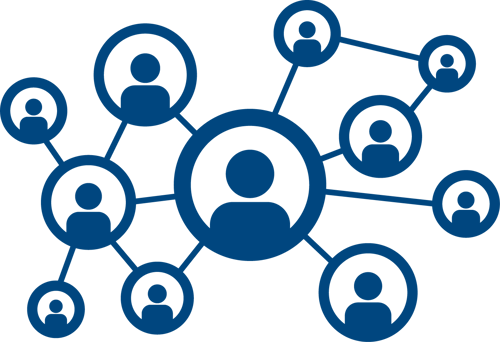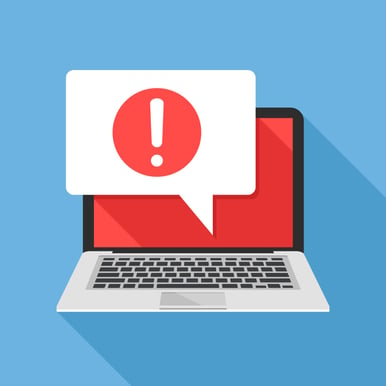6 Ways NOC Services Can Save Businesses Money

What is the value of network surveillance? What is the value of NOC support?
If you have residential customers using your network to work-from-home or commercial customers who need 100% uptime, the game has changed.
The transition from the internet being primarily used for entertainment to the integration of connected devices able to monitor the literal lifeblood of your end users has been a monumental shift—to say the least.
In Deloitte’s 2021 Connectivity and Mobile Trends Survey, they found “the average U.S. household now has a total of 25 connected devices” while 43% of respondents had at least one person schooling from home and 55% had at least one person working from home.

So, when you have a network problem, the traditional method of a customer calling in to complain their network’s not working before your technicians start troubleshooting is not going to fly.
Heightened expectations concerning uptime and downtime of the end user calls for a proactive approach versus a reactive approach to network monitoring.
As a solution provider, CCI’s NOC team frees up time for our clients’ employees, avoiding 50-to-70-hour workweeks and preventing their professionals from getting burnt out.
Every day, CCI’s NOC technicians act as an extension of multiple teams, assisting in special projects, equipment upgrades, and firmware updates during off-hours, and helping with clients when drawn upon for expertise and skills serving as an auxiliary resource to NOC services.
Here are 6 ways your company can save money by implementing NOC services, whether you are currently waiting for customers to alert you to network discrepancies, practicing network surveillance with free, open-source software, or sorting through and managing endless alerts and notifications with paid software.
- Surveil Your Network: Free vs. Paid Monitoring
- A Proactive Approach to Network Monitoring
- Increased Efficiency with 24/7 NOC Support
- Compatible Software for Emerging Equipment
- Preventing Unexpected Call Spikes
- Upholding Customer Reputation
In the end, NOC support and services will provide you and your technicians the ability to proactively save money without having to look at your network around the clock.
1. Surveil Your Network: Free vs. Paid Monitoring
How is your company going to look at your network? Who will be the eyes on your network 24 hours a day and 7 days a week?

Here are the 3 ways you can surveil a network today.
You can have:
- free or open-source software.
- purchased software packages.
- a third party who uses their software and/or does the monitoring.
All three have advantages and disadvantages, but if you have any type of monitoring software, and you don't have eyeballs analyzing the alerts, it's the equivalent to not having surveillance at all.
The advantage of a third party is that they work with the software every day.
They keep the software up-to-date on changes, patches, and updates, including security settings.
Security settings are extremely important, as can be seen in the recent hack of Solarwinds.
There are tons of free software options out there for monitoring, but if you don't have the time to dedicate to actual monitoring on a daily or weekly basis, your company is functioning under a false sense of security.
Software that's not fine-tuned to your network can push out false alerts and waste your technician’s time.
Overly broad software can't help you sharpshoot. Also, it will not allow you to easily see something is happening in your network needing attention.
There’s a reason free software is free, but for some startups and smaller operations, it is the best option available while their network is in its infancy.
2. A Proactive Approach to Network Monitoring
Rural WISPs, cable providers and operators, plus co-ops at the Tier 2, Tier 3, and Tier 4 level are smaller in size and scale and lack resources to properly monitor a growing network compared to Tier 1 providers.
By necessity, small service providers and rural operators tend to adopt a reactive approach.
This can cause unnecessary truck rolls, where technicians respond to redundant problems without taking the time to analyze who it’s affecting and how often it is happening. This is to say, doing the analytical work.
Without analysis, reactive responses can be inefficient and expensive.
A smaller provider is trying to run their business during the daytime with a small team that has an intricate relationship with the network. They’re not interested in proactively monitoring something they know will run without error 80%-to-90% of the time.
Network surveillance (typically, software or hardware monitoring for changes in a network that indicates it's broken, degraded, or headed towards distress) helps eliminate reactivity.
Once a network is surveilled, NOC services take the surveillance information signaling degradation or an outage, and the NOC begins reviewing what that situation is and why it's happening without the operator ever having to break stride from their day-to-day business.
3. Increased Efficiency with 24/7 NOC Support
Adopting a reactive approach often leads to a lack of productivity.
Receiving alerts and notifications 24/7 from an open-source or purchased piece of monitoring software can be incredibly distracting.

Once the software is in place, you will need to have technicians, chief techs, and owners on-call for off-hours and weekends.
When an alert is received, this person(s) will have to jump on their laptop to pinpoint where the alert is coming from.
For instance, the network surveillance software may show the network is not down, but the speeds have simply slowed. It is clear there is an inconsistency that may need a deeper look.
Now, they must gauge whether it is an immediate priority where they need to drive in to troubleshoot onsite or whether it is something that can wait until morning.
If your technicians are responding to those alerts on a part-time basis between other tasks, two things can happen:
- A loss of credibility with your customers when errors and outages are missed.
- A decrease in customer satisfaction when there are too many outages.
When you do respond to the alerts, you will be pulling employees off other tasks. This can put unneeded or undue stress on those employees. Also, the alerts will compete with other priorities that may generate revenue.
NOC Services are Cheaper than a Salary
On the flip side, at half the cost of an annual salary for a technician or engineer, NOC services can provide a proactive, preventive approach to support.
An on-call technician can cost anywhere from $20-to-$30 per hour, and if overtime is included, you’re paying four and a half times that hourly rate.
Not only will your company be purchasing a service, but you will now have the full-time equivalent (FTE) of those positions with 24-hour coverage. This service does not need a vacation or holiday, it can cover support over the weekends, and assist with off-hours outside of 8-to-5.
Meanwhile, the service provider can continue to build plant (i.e. build cable, towers, antennas, lay fiber, and construct the network) to bring on new customers—their core business.
4. Compatible Software for Emerging Equipment
The necessity of continually upgrading to newer, up-to-date equipment to stay competitive is a reality most service providers are accustomed to.
Are new pieces of equipment going to be quickly adaptable to your method of network surveillance?
If your company uses high-quality software to monitor newer pieces of equipment, in most cases, the new equipment will already be compatible with your software. Whereas if you're using off-the-shelf software, it could be working today, but it might not work following the upgrade.
For example, you must upgrade to a new optical receiver after a modem install. Currently, your company is using a free piece of software, but the free version does not auto-update to accommodate new pieces of equipment coming into the market from Ubiquiti or Nokia.
As a result, your company can either roll back the equipment update or roll up to software able to operate with the new equipment.
A network operations center (NOC) will always allow you to upgrade equipment without fear of compatibility issues.
5. Preventing Unexpected Call Spikes

The expectations are if you're providing a service, it needs to work.
When it doesn’t work, your end users will call en masse and drive up your cost.
A network outage without a fast response can bloat your call traffic, frustrate your customers, and damage your reputation.
If your company is working with a call center or contact center with the average cost per call being between $7.00 to $10.00 domestically, your bill could double overnight from a widespread outage.
If you give your customers credits or discounts on their monthly bills, due to outages or downtime, analyze how much this is costing your company.
It always comes down to who is going to foot the bill?
6. Upholding Customer Reputation
Telecom companies spend anywhere from $300 to $5,000 on marketing and advertising initiatives to acquire a customer able to generate revenue back to their company.
Frequent outages and network degradation will quickly alienate those customers from your service.
In the not-so-distant past, if you were a homegrown, rural operation, expectations were not the equivalent to a Tier 1 provider. In some regards, those expectations may have been lower than today.
However, today's environment is very competitive, where people are using networks as digital lifelines.
Those differences in perception and expectation between a big provider and a smaller provider are quickly eroding and the best performing service wins out.
Outsource NOC Services and Save Money
As a homeowner, waiting until the house is on fire, or until your basement floods is not the best solution. And as a service provider, a proactive approach can prevent damage to all aspects of your business.
Stop spending your hard-earned capital on unneeded truck rolls and overtime pay and start integrating network surveillance into your business strategy.
CCI Systems promotes the ability for companies to save money on unexpected costs popping up on off-hours, weekends, or holidays. Our NOC technicians are only a screen away from your network at all hours of the day and night.
We know how to identify false alerts, prioritize the important ones, and add urgency to any situation which might bring down any of your infrastructure.
Keeping an eye on your network so you don’t have to is our priority.
If you or your company is having concerns about outsourcing NOC support and services, here are 3 reasons why providers resist the need to outsource network monitoring. This may ease your mind.

